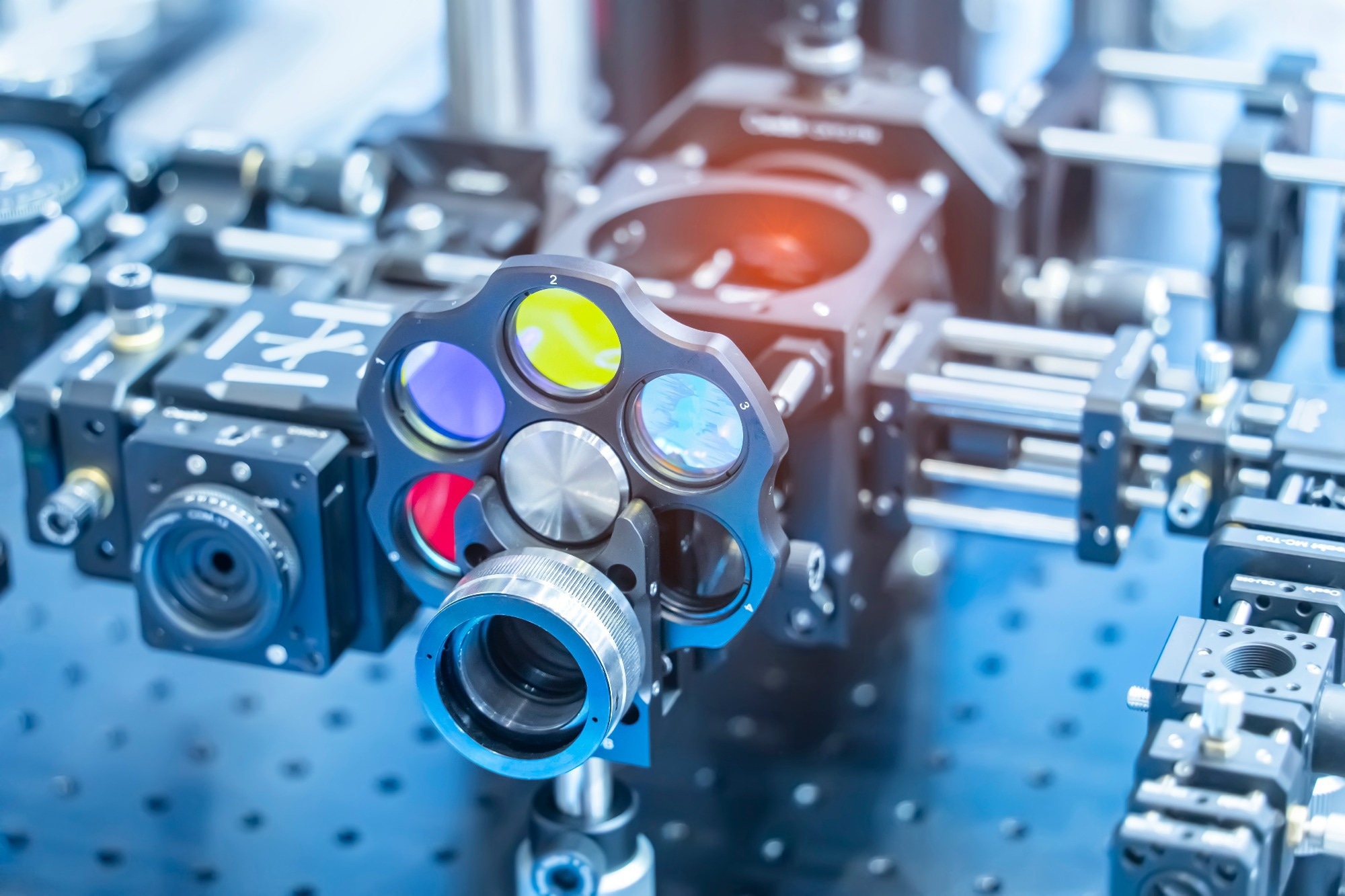A recent study in APL Materials presents a new hybrid optical platform that improves fluorescence signals for highly sensitive detection.
By combining photonic crystal (PC) substrates with magneto-plasmonic cryosoret nano-assemblies (MCSs), the system addresses common issues in fluorescence-based biosensing, such as signal loss, limited emission direction, and the need for bulky optical components.
The platform shows sensitivity at the attomolar level, with potential applications in medical diagnostics and environmental monitoring.

Image Credit: asharkyu/Shutterstock.com
Limitations of Standard Fluorescence Detection
Fluorescence detection is widely used in biomedical diagnostics due to its high specificity and sensitivity. However, standard methods often face weak signal intensity and background noise, which reduce detection accuracy.
Gold nanoparticles (AuNPs) can improve signal strength through plasmon-enhanced fluorescence (PEF) by increasing the electromagnetic field near fluorophores. But these systems often experience energy loss (Ohmic losses) and signal quenching when fluorophores are placed too close to the metal surface.
Photonic crystals offer another option. These are metal-free dielectric structures that control light using guided mode resonances (GMR) and photonic bandgap (PBG) effects. However, most PC designs enhance only one polarization mode, which limits their effectiveness in fluorescence enhancement.
Development of the Hybrid Photonic-Plasmonic Platform
To address these issues, researchers developed a hybrid system combining MCSs with PCs that support both transverse electric (TE) and transverse magnetic (TM) modes. This setup increases emission strength while reducing quenching and removing the need for complex optical components.
The PC substrate was designed with specific parameters: a grating period of 380 nm, optimized groove widths, and layer thicknesses. These were calculated using rigorous coupled-wave analysis (RCWA) simulations to support strong band-edge and guided mode resonances in both TE and TM modes.
MCSs were created using a cryosoret nano-engineering (CSNE) method. This process mixed colloidal gold and magnetite (Fe3O4) nanoparticles, then cooled the mixture rapidly in liquid nitrogen. By changing the freezing time, researchers controlled the number of nanoparticles in each assembly, producing clusters with 2 to 13 particles.
Transmission electron microscopy (TEM) confirmed the 3D structure of the MCSs. The images showed clear lattice patterns of both Au and Fe3O4 and nanoscale gaps that are important for plasmonic activity. As particle number increased, the localized surface plasmon resonance (LSPR) redshifted from 525 nm to 630 nm.
To test the system, Rhodamine B (RhB) fluorophores were embedded in a polyvinyl alcohol film and spin-coated onto the PC surface with MCSs. A 532 nm continuous-wave laser excited the fluorophores, and the emitted light was collected and analyzed.
The photonic crystal resonances excited the plasmonic modes in the MCSs, which increased the fluorophore’s emission. This approach improved fluorescence without adding complexity to the system.
Achievements in Fluorescence Detection Sensitivity
The hybrid system achieved a more than 450-fold increase in fluorescence intensity compared to a plain glass substrate. This enhancement was due to the large optical cross-section of the MCSs and the high-quality factor (~200) of the PC’s band-edge resonance. These factors increased the local optical density and prolonged photon lifetimes through multiple internal reflections.
Tests using RhB showed two linear detection ranges:
- 1 µM to 0.01 nM, with a sensitivity slope of 54 ± 2.19 per decade
- 0.01 nM to 0.01 fM, with a slope of 15 ± 0.48 per decade
The system could detect concentrations as low as 10 aM, close to single-molecule sensitivity.
Fluorescence performance depended on the number of nanoparticles in each MCS. Among all tested types, the MCS4 configuration gave the best results, balancing strong signal enhancement with low quenching.
Applications for Optical Biosensing and Analytical Technologies
This system addresses several practical challenges in biosensing. The design does not require objective lenses or prisms, making it simpler and more compact. The enhanced signal strength and controlled emission direction improve the signal-to-noise ratio, which is critical for detecting small amounts of target molecules.
The ability to work with both TE and TM modes also improves light extraction and polarization control. This supports the development of small, sensitive optical sensors for use in healthcare, environmental testing, and food safety.
The platform may also be useful in other areas like single-molecule detection, optical imaging, and quantum optics. Its ability to be scaled and used for different functions makes it a promising option for future sensor technologies.
Download your PDF copy now!
Summary and Next Steps
This hybrid PC–MCS system improves fluorescence by more than 450 times and allows for detection at attomolar concentrations. It solves key challenges in biosensing by combining photonic resonance and plasmonic features in a simple and compact design.
Future research should focus on adapting the system for different types of biomolecules, tuning the optical properties of both PCs and MCSs, and integrating the system with microfluidic devices for real-time use. It will also be important to test long-term stability and large-scale production for real-world applications.
Journal Reference
Bhaskar, S., et al. (2025). Photonic crystal band edge coupled enhanced fluorescence from magneto-plasmonic cryosoret nano-assemblies for ultra-sensitive detection featured. APL Materials. DOI: 10.1063/5.0251312, https://pubs.aip.org/aip/apm/article/13/4/041103/3341598/Photonic-crystal-band-edge-coupled-enhanced
Disclaimer: The views expressed here are those of the author expressed in their private capacity and do not necessarily represent the views of AZoM.com Limited T/A AZoNetwork the owner and operator of this website. This disclaimer forms part of the Terms and conditions of use of this website.